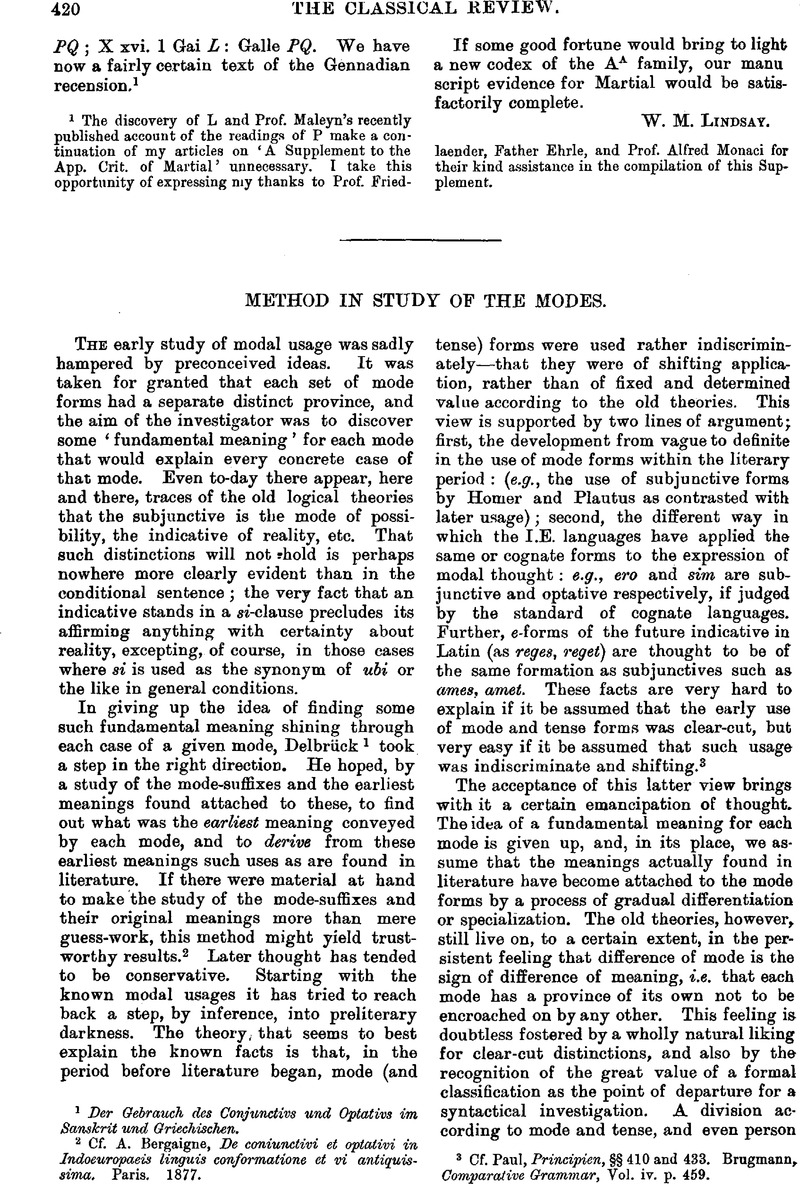No CrossRef data available.
Article contents
Method in Study of the Modes
Published online by Cambridge University Press: 27 October 2009
Abstract

- Type
- Original Contributions
- Information
- Copyright
- Copyright © The Classical Association 1901
References
page 420 note 1 Der Gebrauch des Conjunctivs und Optativs im Sanskrit und Gruchischen.
page 420 note 2 Cf. Bergaigne, A., De eoniunctivi et optativi in Indoeuropaeis linguis conformatione et vi antiquissima. Paris. 1877.Google Scholar
page 420 note 3 Cf. Paul, Principien, §§ 410 and 433. Brugmann, , Comparative Grammar, Vol. iv. p. 459.Google Scholar
page 421 note 1 Morris, E. P., ‘Subjunctive in Independent. Sentences in Plautus,’, A.J.P. Vol. xviii.Google Scholar
E.g., posse, licet
page 421 note 3 The question quid agis? is another that illustrates the working of these same elements. No one mistakes the literal quid agis? (as seen in Cic. in Cat. I. 11. 27) for the quid agis? of greeting, though Plautus continually puns on the double meaning. It is interesting to note further, that in Cicero's Orations quid ago? is allowed once (p. Quinct. 16. 53); quid agam? occurs three or four times.
page 422 note 1 See Class. Rev. xv. p. 52.
page 421 note 2 Greenough makes still another application of this principle in an article on ‘The Contrary to Fact Construction,’ Harv. Studies, Vol. vii.
page 421 note 3 E.g., careful discrimination in the use of the modes.
page 421 note 4 A.J.P. xxi., p. 270.




